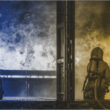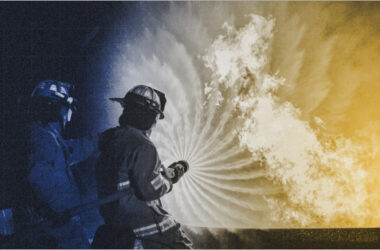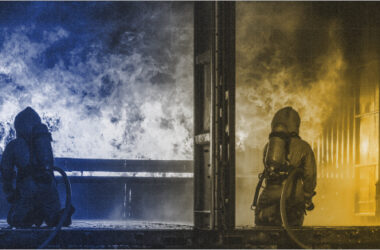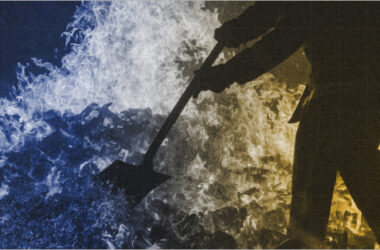Fire safety is not merely a technical requirement anymore. Rather, it is considered a collective responsibility which safeguards lives, property and livelihood. The Bureau of Indian Standards (BIS) in India has established a methodical approach to classification of fires in such a way that firefighters, industries and even homeowners should be able to react appropriately by using the appropriate extinguishing methods and equipment.
This categorization makes sure that fires are not combated blindly. When you know the nature and behaviour of fire, you will be able to take decisive actions when faced with an emergency. This will also help you choose the right fire insurance option to safeguard your property.
Now, we should see how fires are classified according to the Indian standards and what each classification means for everyday safety. Read on!
How Fire is Classified Under Indian Standards
Fire, simply put, is a rapid chemical reaction, which involves heat, oxygen and fuel, the three components of the fire triangle. The type of fire varies drastically depending on what’s burning.
According to IS 15683:2018, the Bureau of Indian Standards classifies fires under four major classes. This system helps determine which extinguishing agent should be used to suppress each type of fire safely.
Let’s now have a closer look at each of these classes.
Class A Fire– Ordinary Combustible Fires
Class A fire involves the most widespread materials within our surrounding such as wood, paper, cloth, rubber, and certain types of plastics. Once burned, these fires usually leave behind ash.
How to extinguish:
Apply water, foam, or a multipurpose dry chemical extinguisher. Point to the base of the flames and move side to side to extinguish the burning material effectively.
Class B Fire– Flammable Liquids and Gases
This group encompasses fires which involve gasoline, diesel, oil, paint, grease, or other flammable liquids and gases. These fires do not produce ash, and instead, they produce heavy black smoke that makes visibility poor and breathing difficult.
How to extinguish:
Do not use water, it will propagate the flames. Rather, apply carbon dioxide (CO2) or dry chemical extinguishers or place fire blankets over the fire to seal off the oxygen supply.
Class C Fire– Electrical Fires
Class C fires originate from energised electrical equipment — like computers, wiring, circuit breakers, or electrical panels. The biggest danger here is electrocution, which is why water must never be used.
How to extinguish:
First, if possible, turn off the power supply to de-energise the source. Then use a CO₂ or non-conductive dry chemical extinguisher. These are designed to suppress flames without conducting electricity.
Class D Fire– Metal Fires
Class D fires are rare but extremely dangerous. They occur when combustible metals such as magnesium, titanium, sodium, or potassium catch fire. These metals can burn at incredibly high temperatures and react violently to water.
How to extinguish:
Use specialised dry powder extinguishers formulated for the specific metal involved. Apply the agent gently from a distance to avoid disturbing the burning material.
Recognising Different Stages of Fire
Every fire follows a predictable progression. Knowing its stages helps determine the right response — and can even influence how you choose your Fire Insurance coverage.
There are three primary stages:
- Incipient Stage:
The fire is just starting, small and contained. Quick action with a fire extinguisher or water can usually stop it here. - Growth Stage:
The flames are spreading rapidly, feeding on nearby materials. The fire’s intensity increases, requiring greater effort — often more water or foam — to control it. - Fully Developed Stage:
This is the most dangerous phase, where the fire has reached its peak strength and temperature. It consumes everything in its path, demanding extensive firefighting resources and posing severe risks to people and property.
Fire Safety Precautions You Should Never Ignore
While the BIS classification helps you understand fire types, prevention remains the first line of defence. Even if you have comprehensive fire and burglary insurance, vigilance and preparedness can prevent disasters before they occur.
Here are some essential safety practices to follow:
- Create a Fire Safety Plan:
Design clear evacuation routes, emergency exits, and meeting points. Conduct regular fire drills so that everyone knows what to do under pressure. - Maintain Electrical Systems:
Electrical faults are a leading cause of fires. Have certified electricians inspect wiring, outlets, and equipment regularly to catch issues early. - Handle Flammable Materials Safely:
Keep flammable liquids in approved containers, stored away from heat sources or open flames. Ban smoking in high-risk areas. - Keep Fire Extinguishers Ready:
Install extinguishers in convenient positions and service them on a regular basis. The members of the family or staff should be taught how to use them. This is because, using the wrong ones can lead to a worse situation.
Choosing Fire Extinguishers for Your Premises
There is no single extinguisher that fits all scenarios. The best option varies depending on the fire hazards that are unique to your premises.
As an example, a normal office might only need Class A extinguishers to put out paper or wood fire. But when it contains computers (or even a server room) you will also need Class C extinguishers.
A restaurant kitchen, however, might require some specific extinguishers that have to deal with Class B fires caused by oils and grease. The correct solution is usually a combination of extinguishers or multipurpose types that deal with multiple classes.
Always call a fire safety expert when in doubt. They can evaluate your risks, and recommend the right setup.
Final Thoughts
The Indian system of classification of fires is not just a technical norm, it is a guide to save lives and property. Knowing what fuels a fire, you can react promptly, apply the appropriate extinguisher, and minimize the extent of damage.
Fire safety awareness cannot be ignored whether you are running an office, a factory or a house. And even though the best defense is offense: being covered by proper insurance will mean that you will have a financial cushion against the unexpected.
For small and medium businesses, the difference between success and failure may be in the partnership with credible insurance providers. Their tailored business and fire insurance plans can protect your premises, equipment, and inventory and help you get back on your feet and remain strong when times are tough.
BimaKavach helps you choose customisable Fire Insurance policies designed to protect your property, assets, and business from unexpected fire-related losses. Our team of seasoned experts simplifies the insurance process, helping you understand coverage options clearly and ensuring a smooth, hassle-free experience from start to finish.








